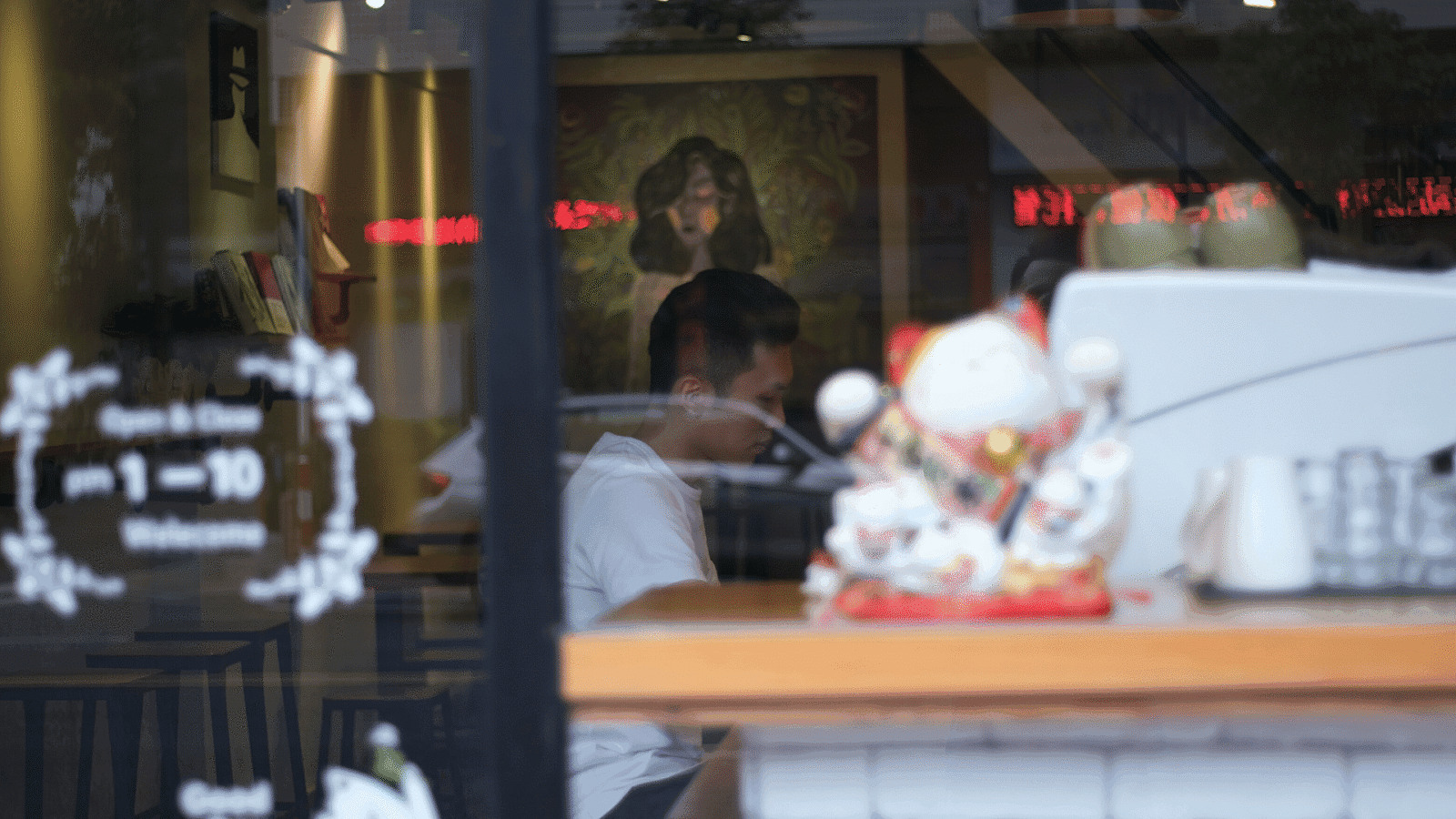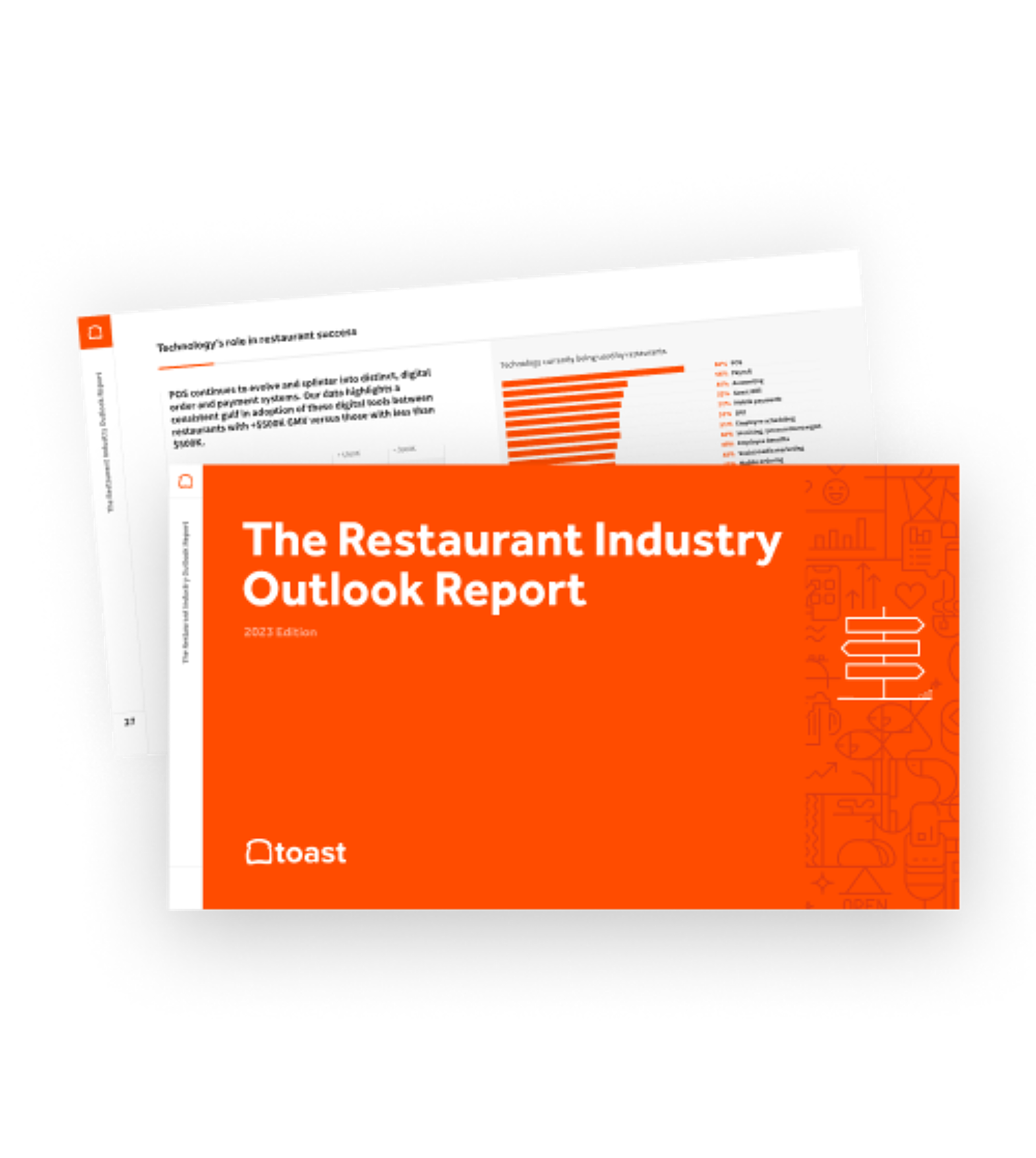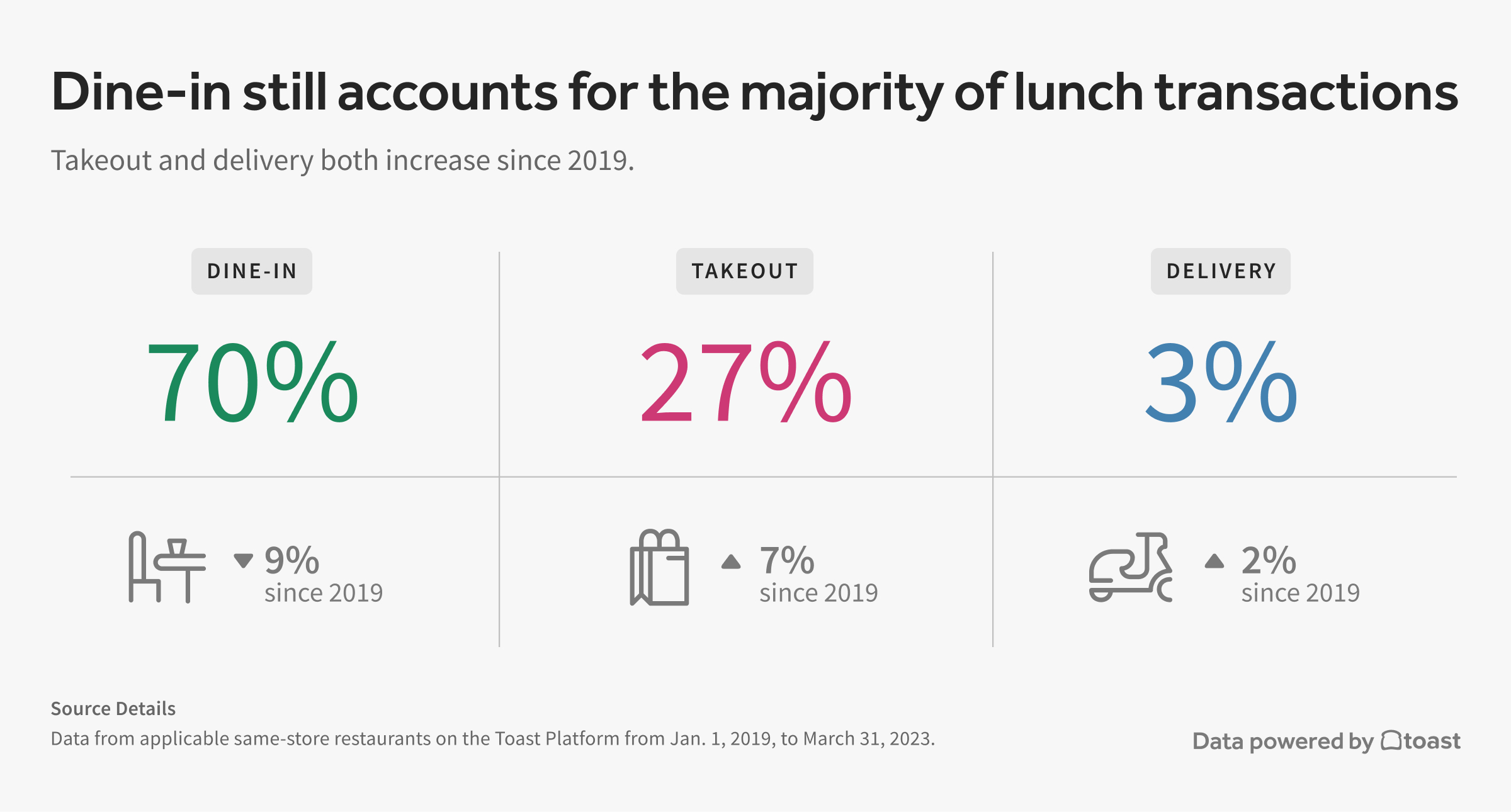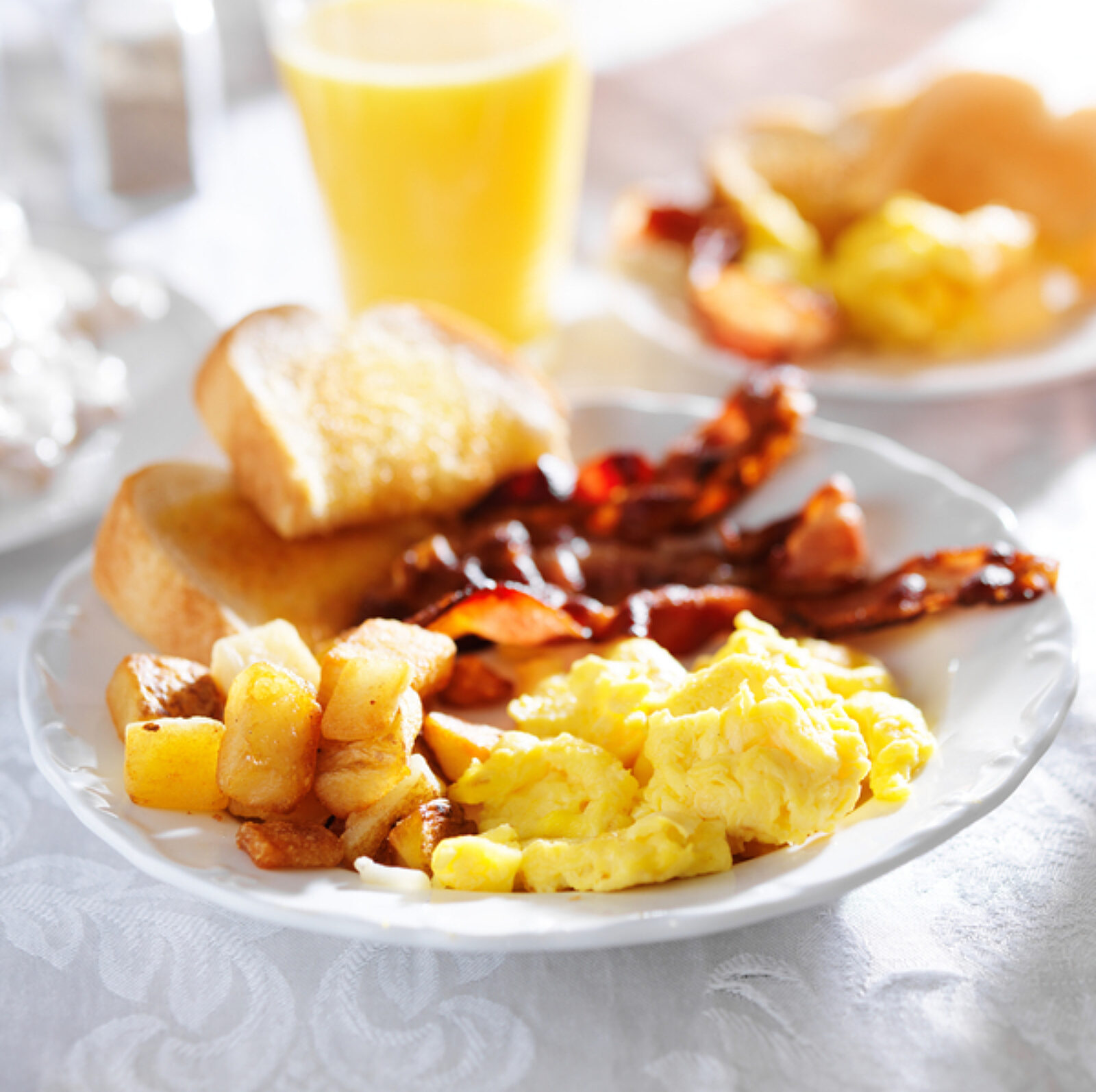
Impacts of Work-from-home Trends on Workday Restaurant Guests
Restaurant operators can capitalize on work-from-home trends to help drive more sales during the workday.

Justin GuinnAuthor


The Restaurant Industry Outlook Report: 2023 Edition
Download the report to get key learnings from 2022 and learn what operators expect to see in 2023. The insights cover opportunities, challenges, and tactics for restaurant success.
The influx in remote work and work-from-home trends has created ripple effects across the restaurant industry.
It’s important for restaurant operators to track how, if at all, their business has been affected by the work-from-home trends — for lunch services especially, though also dinner, breakfast, and coffee.
That’s why we conducted research on the dining habits of the remote workforce in the United States.
Read on for insights on restaurant ordering frequencies by age group, meal types, and more. Learn marketing tactics that can help boost sales during working hours. And see how often diners are returning to their favorite workday restaurants on nights and weekends.
Key takeaways
75% of respondent that work from home or remotely say they get lunch out at least once during the workweek — with 31% saying they get lunch out at least three times per workweek
73% of respondents that work from home or remotely say they get dinner out at least once during the workweek
BOGO deals (47%), loyalty programs (43%), and discounts during specific days of the week (40%) are the top three offers that would encourage WFH folks to dine in, get takeout, or order delivery from a restaurant during the workday
62% of respondents that work from home or remotely visit their workweek restaurants on nights and weekends at least once a month
Loyalty programs (47%), email & SMS marketing (42%, 36%), happy hours (34%), and social media marketing (32%) are the top drivers that WFH restaurant guests said would get them visiting restaurants again for dinner and on weekends.
Restaurant Marketing Plan
Create a marketing plan that'll drive repeat business with this customizable marketing playbook template and interactive calendar.

Work-from-home trends have lunch orders just ahead of dinner
Our research reveals that lunch orders outpace all other meals during the workweek for work-from-home diners.
Three-quarters (75%) of our work-from-home survey respondents say they’re getting lunch out at least once during the workweek — and 31% are eating lunch out at least three times during the workweek.
Dinner is a close second, with 73% of respondents that work from home or remotely saying they get dinner out at least once during the workweek — with 27% dining out at least three times a week during the workweek.
Coffee and breakfast are less popular for the work-from-home crowd, though a majority of our work-from-home respondents still partake at least once a week for both. For coffee during the workday, 59% of respondents say they partake at least once a week — 56% saying the same for breakfast.
Coffee Shop Business Plan Template
Use this free coffee shop business plan template to easily create a great business plan that organizes your vision and helps you start, grow, or raise funding for your coffee shop.

Lunch more popular with younger work-from-home diners — dinner with older
Again, our research found 75% of our work-from-home respondents get lunch out at least once a week.
When we cut the data by age, we found that 84% of our 18-29 year old respondents get lunch at least once a week — with over 45% getting lunch at least three times per workweek.
This 18-29 year old cohort are also getting daily breakfast (15%) and daily coffee (13%) more than the average (10%, 10%).
For millennials and younger Gen Xers, dinner is significantly more popular. Nearly three-quarters of all respondents get dinner out at least once a week.
That jumps to 80% for 30-44 year old respondents — and 26% of this cohort say they’re getting dinner at least three times per week.
Restaurant deals, promotions, and specials can help drive more workday sales
Work-from-home diners also told us what would encourage them to eat out more frequently during the workday.
BOGO deals (47%), loyalty programs (43%), and discounts during specific days of the week (40%) are the top three offers that would encourage work-from-home guests to dine in, get takeout, or order delivery from a restaurant during the workday.
There are two notable differences when we cut this data by age:
Discounts for loyalty program members is the most popular offer for 18-29 year olds.
A separate, low cost value menu is the second most popular offer for work-from-home diners over 60 years old.
No longer the same old workday lunch…
Our latest Restaurant Trends Report highlights the evolution of the lunch hour in the wake of the pandemic and surge in work-from-home employment.
Lunch checks have increased by about 46% in Q1 2023 compared to Q1 2019. The average spend on dine-in food was $24 per transaction and 22$ for takeout transaction in Q1 2023 — a 49% and 42% increase from Q1 2019, respectively.
We broke our lunch data down further to understand just how lunch-goers prefer to get their midday meal.

Methodology: Toast analyzed weekday transactions in 18 select metropolitan areas between 11 a.m. and 3 p.m. local time from a cohort of restaurants on the Toast platform, from Jan. 1, 2019, to March 31, 2023. Toast used a cohort of same-store customers on the platform since 2019 to demonstrate COVID-19 pandemic recovery trends.
Dine-in transactions accounted for 70% of transactions during lunchtime in Q1 2023, down from 79% in Q1 2019.
Takeout transactions accounted for 27% of transactions during lunchtime in Q1 2023, up from 20% in Q1 2019.
Delivery only accounted for about 3% of total transactions during lunchtime in Q1 2023, up from 1% in Q1 2019.
The greatest takeaway from this research is the jump in takeout lunches. Could work-from-home trends help explain the 7% increase in takeout lunches?
Research from the New York Times in 2016 highlights how 62% of American workers ate lunch at their desks. If that trend held for our work-from-home crowd, that could explain the increase in takeout lunches — workers running out to grab food they can take back home and eat while working.
Room to grow bringing workday restaurant guests back on nights and weekends
Restaurants can help maximize their sales by catering to workday crowds as well as evening and weekend diners.
With that in mind, we asked our work-from-home respondents about how often they patronize their workday restaurants on nights and weekends.
We found that 62% of respondents that work from home or remotely visit their workday restaurants on nights and weekends at least once a month.
Loyalty programs (47%), email & SMS marketing (42%, 36%), happy hours (34%), and social media marketing (32%) are the top drivers that work-from-home restaurant guests said would get them visiting restaurants again for dinner and on weekends.
Toast can help operators capture more sales — and capitalize on those sales
Our respondents say restaurant loyalty programs are important for driving more sales during the workday as well as generating repeat visits at workday businesses on nights and weekends.
Restaurants can implement a POS-powered loyalty program to reap the benefits while maintaining a consolidated tech-stack. Toast’s loyalty program can make it easy for guests to sign up and redeem rewards.
The right tech-stack can also help ensure restaurants maximize digital ordering via takeout and delivery during the workday — all without disrupting their staff serving dine-in guests.
Restaurants open for lunch can update their takeout processes and systems for a more seamless ordering experience, whether takeout, counter-service, full-service, or others.
For example, Toast’s New Steps of Service can help provide seamless channels for takeout while still offering multiple order and pay options for dine-in guests. The New Steps of Service can be especially valuable for lunch-focused, counter-service restaurants — enabling them to take orders:
Traditionally at the counter via an employee
Self-serve kiosks placed strategically in the restaurant
Ordering and paying via QR codes placed at each table
Takeout shelves so diners can quickly grab their orders and get back to work
Delivery through owned and third-party channels
Schedule a demo to see how Toast is truly built for the unique needs of your operation. And be sure to subscribe to Toast's On The Line blog for more industry know-how and insights.
Methodology
Toast conducted a blind survey of 430 U.S. adults ages 18 and older on February 6, 2023. Respondents were not made aware that Toast was fielding the study. All respondents indicated they work remotely — from home, a shared workspace, etc. — at least part time. Using a standard margin of error calculation, at a confidence interval of 95%, the margin of error on average is +/- 4 - 5%.
Forward-Looking Statements
This report contains forward-looking statements within the meaning of the Private Securities Litigation Reform Act of 1995, which are not guaranteed, and are subject to risks, uncertainties, and changes in circumstances that are difficult to predict. Forward-looking statements are based on our current expectations and assumptions, which may not prove to be accurate. These statements are not guarantees and are subject to risks, uncertainties, and changes and we assume no obligation to update or revise any forward-looking statement, except as required by law. Specific factors that could cause actual results to differ materially from forward-looking statements include, but are not limited to, the effect of economic conditions in the United States and globally, general industry conditions and the other important factors disclosed previously and from time to time in Toast’s filings with the Securities and Exchange Commission. Toast does not guarantee you will achieve any specific results if you follow any advice herein.
Is this article helpful?
DISCLAIMER: This information is provided for general informational purposes only, and publication does not constitute an endorsement. Toast does not warrant the accuracy or completeness of any information, text, graphics, links, or other items contained within this content. Toast does not guarantee you will achieve any specific results if you follow any advice herein. It may be advisable for you to consult with a professional such as a lawyer, accountant, or business advisor for advice specific to your situation.
Read More
Subscribe to On the Line
Sign up to get industry intel, advice, tools, and honest takes from real people tackling their restaurants’ greatest challenges.



